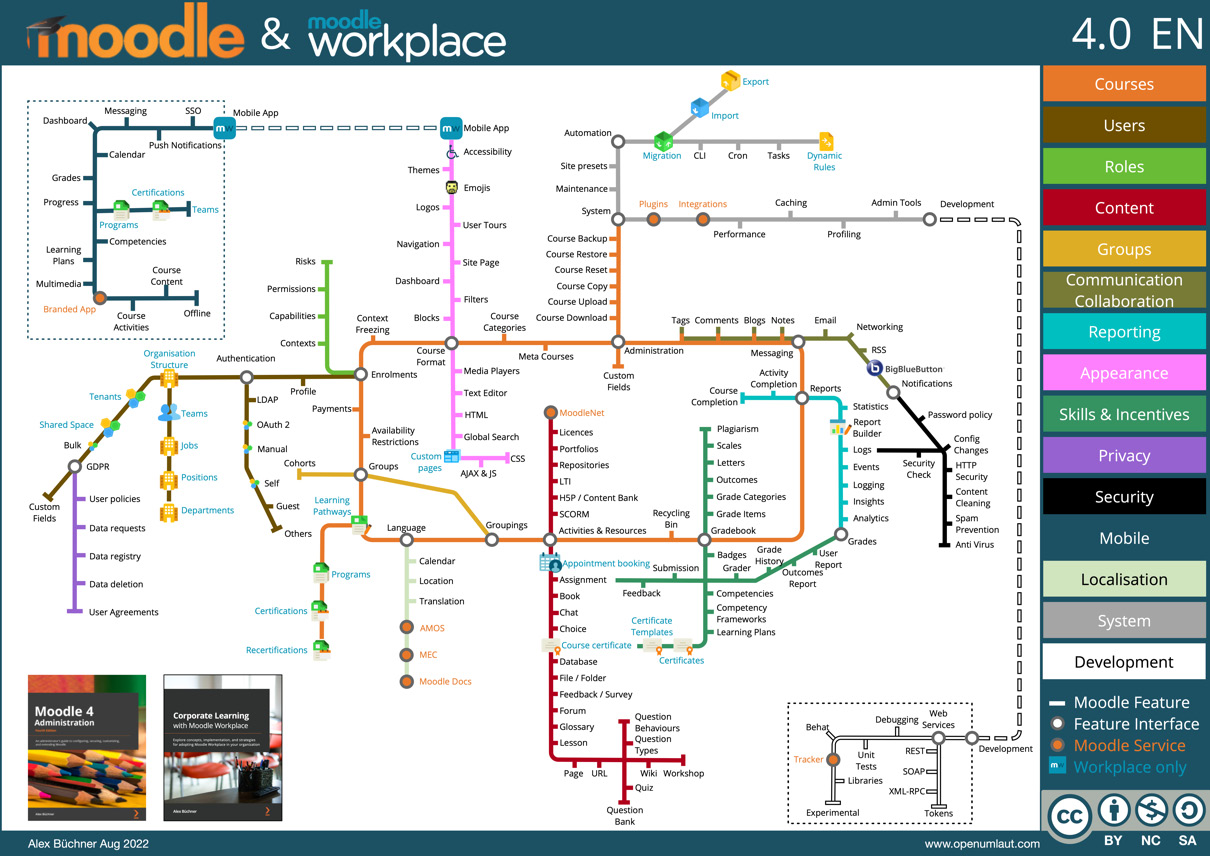Since its launch in 2002, Moodle has become the benchmark that every learning management system is measured against. It has won a wide range of international accolades and established itself as an ecosystem for educational tools and services.
There are two versions of Moodle: Moodle LMS and Moodle Workplace.
Moodle LMS is the original version of Moodle, targeted at educational institutions such as schools, colleges, universities, and training providers. Moodle Workplace is designed for corporate and organizational training, resulting in a powerful and flexible platform for workplace learning.
While this book covers the administration of Moodle LMS, it can also be used with Moodle Workplace, since the latter is an extension of the former. References to Moodle Workplace and samples will be provided throughout.
A fun way to demonstrate the various Moodle subjects is in the form of a tube/subway/metro/underground map, where any icon(ic) stations represent Moodle Workplace-only features (you can download higher-quality versions in multiple languages and up-to-date features from www.openumlaut.com):
Figure P.1 – Moodle and Moodle Workplace map
Moodle 4 Administration is a complete, practical guide to administering Moodle sites. It covers setting up Moodle, configuration, day-to-day administrative tasks, and advanced options to customize and extend Moodle.
The author, who has been at the cutting edge of Moodle since its advent, has adopted a problem-solution approach to bring the content in line with your day-to-day operations. The practical examples will help you set up Moodle for large organizations and small entities alike.
This is a one-stop reference for tasks you will encounter when administering a Moodle site of any shape or size. It not only covers core Moodle functionality but also some third-party tools and add-ons that will increase your flexibility and efficiency even further when dealing with administrative duties.
The fourth edition of this title has been written from scratch to align with Moodle’s latest version. It has been further augmented with over 120 diagrams, checklists, and workflows. I hope you find its content useful when administering your Moodle system. Happy Moodling!



 Free Chapter
Free Chapter


